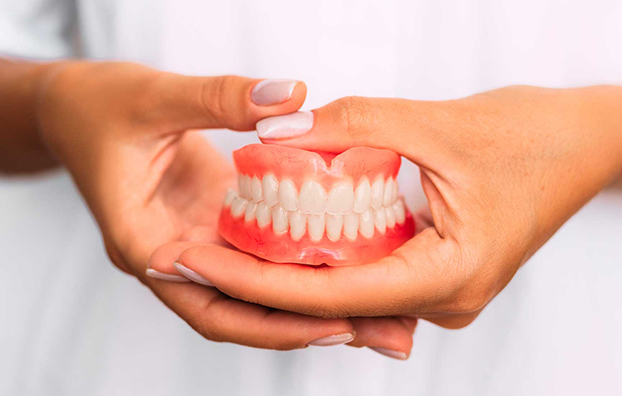Denture Relining

Relining of Dentures
Signs that indicate it's time to reline or rebase your dentures
You should make a dental appointment any time your dentures feel uncomfortable. Dentures must fit properly, so they do not rub on the gums and create sore spots. Most patients will need to have their dentures adjusted after tooth loss, as reshaping of the gums and jawbone will naturally follow.
The American College of Prosthodontists explains that many patients mask these changes by using denture adhesives to ensure the prosthetics stay in place. However, relining will still be necessary. Denture relining involves adding material to the existing base of the denture (the part that supports the artificial teeth) to make it hug the patient's gums and stay in place.
“Dentures must fit properly, so they do not rub on the gums and create sore spots.“
There are three types of denture relining
- Hard Relining: Hard relining uses the same material as the denture’s original base, typically acrylic, and lasts around two years. After this period, the patient’s gums may change shape enough to require another reline.
- Soft Relining: Soft relining can last slightly longer than hard relining. However, if the patient’s gums are steadily changing, a new hard reline may be needed before the previous one wears out. According to the Journal of Dentistry and Medical Research, a soft, silicone-based denture lining can help dentures stay in place and is more comfortable than acrylic.
- Temporary Relining: Temporary relining is a special type of soft reline using a medicated temporary lining material to assist patients with swollen, irritated gums. Once the irritation subsides, a dental professional can take new, accurate impressions and perform a soft or hard reline.
“One or a combination of methods could work for you.”
Preventing the Need for Denture Relining and Rebasing
“No amount of care can prevent bone and gum shrinkage stemming from dental extractions.“
Expectations for Denture Relining
If our team determines that relining can correct ill-fitting dentures, the first step is to schedule an appointment to examine both the dentures and the patient's mouth. The dentist may need to remove some of the existing denture base material before taking new impressions during this appointment. If a chairside relining is performed, the patient will receive the refitted dentures before leaving the appointment. If the dentures need to go to a lab for relining, they may be ready as soon as the next day.
Regardless of the type of relining treatment the patient receives, we will explain the process and address any questions they may have. Our goal is to support patients throughout the entire process and any necessary follow-up care.




